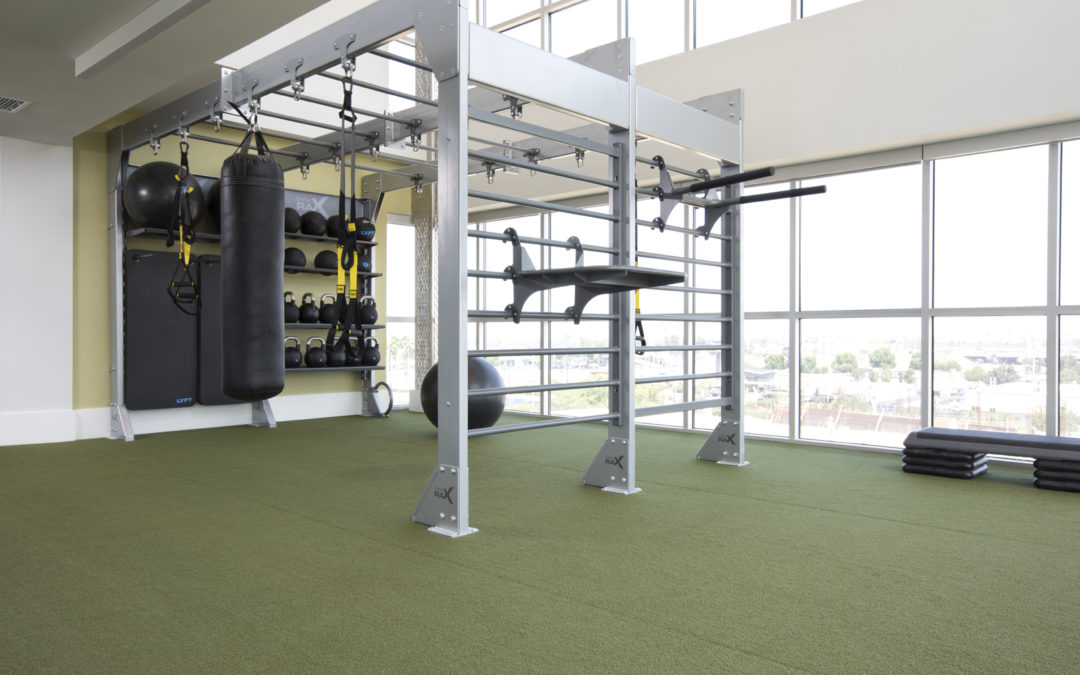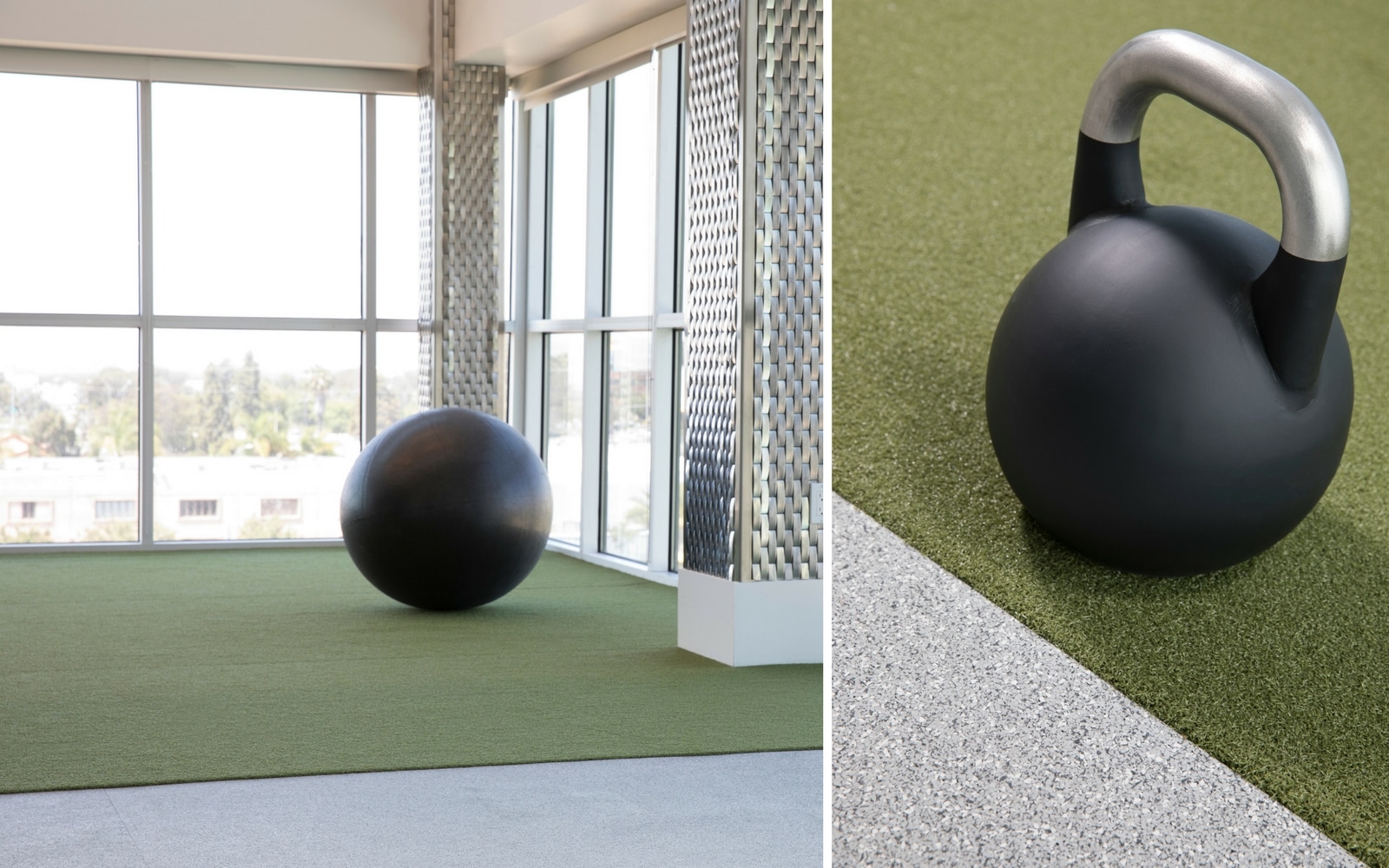
Today’s health-conscious consumers on the cutting-edge of fitness are realizing the limitations of stationary strength and cardio machines and are opting instead to focus on functional strength and conditioning exercises, such as high-intensity interval training. This evolution in fitness was documented in the American College of Sports Medicine’s worldwide survey of fitness trends for 2016, which ranked high-intensity interval training as the No. 1 choice by consumers who now want more open spaces to exercise to boost long-term wellness.
The inclusion of functional training into a healthy lifestyle does not stop when traveling for business or pleasure and may influence a traveler’s hospitality selection. To appeal to the modern consumer and stand out from competition, many in the hospitality industry are offering a customizable approach to staying fit while away from home that includes a full-scale gym and wellness center to support functional fitness activities, such as jumping, sprinting, throwing and crawling.
To ensure these facilities meet the high expectations of today’s fitness enthusiasts, contract architects and specifiers are opting for flooring that positively influences safety, ergonomics and acoustics to provide users with force reduction and energy restitution throughout each workout.
How Flooring Impacts Functional Fitness
During functional training, people use their bodies and weights to perform exercises, making the surface underneath their feet more critical than ever before. In response to the functional training trend, fitness centers nationwide are removing some of the standard equipment and adding open space and more supportive flooring for interval training.
Hilton Hotels is taking the functional fitness trend one step further by offering open space with athletic flooring in individual hotel rooms. The Hilton Five Feet to Fitness project offers fitness-minded guests with a functional fitness nook in their rooms, equipped with Ecore ergonomic flooring, functional training equipment and a video kiosk with a library of guided exercises. The specially designed flooring keeps guest workouts quiet and non-disruptive to neighboring rooms while providing support underfoot for a variety of fitness activities.
Unlike traditional fitness center flooring, functional training flooring has a direct impact on the performance of the athlete, providing stability and support to protect from injury. Functional fitness flooring must withstand heavy weight drops, ropes, medicine ball slams and repeated jumping, all while providing a comfortable, ergonomically sound and quiet environment.
Architects and designers should keep in mind these three important factors when specifying a functional fitness facility:
Safety
Athletes of all levels—weekend warriors to Olympic champions—train to improve their abilities and reach new achievements. With each push toward greatness, athletes put their bodies at risk of injury that could set back their efforts temporarily or permanently. Thus, measures are taken to protect athletes’ bodies to ensure they are able to perform at peak levels, including proper nutrition, adequate sleep and high-quality equipment. Flooring is a key piece of equipment for athletes, playing a role in nearly every activity from start to finish. To keep safety a priority, fitness facilities should invest in surfaces that mitigate injury, protect the body and promote ultimate and healthy performance.
Ergonomics
Once the athlete’s body is protected, the focus turns to enhancing and improving performance. Functional fitness calls for intense activities to be performed in different frequencies and directions over and over. No matter the intensity, the repetitive motion, swift movement and constant impact takes a toll on the body and the quality of the workout. Ergonomic flooring helps diminish fatigue, minimizes discomfort and enables athletes to perform at their highest levels longer and more efficiently. The right flooring enhances longevity of athletes by absorbing force and providing a return of energy through innovative engineering and design.
Acoustics

While acoustics may not be the first thing that comes to mind when brainstorming a state-of-the-art workout facility, it has a surprisingly significant impact on the overall fitness experience. A room full of athletes performing various activities involving fast movements and heavy weights can become a noisy mess fast. Using a flooring surface that absorbs energy, vibrations and sound can greatly reduce the ambient noise and create a more pleasant experience for the user and those around this space while increasing the longevity of the flooring and fitness equipment.
Additional Flooring Selection Considerations
There are many different flooring materials to choose from when designing a fitness facility—some offering more benefits than others. Although the flooring should be selected to meet the needs of the fitness center user first and foremost, the durability and sustainability of the product should play a role in decision-making, as well.
The use of environmentally conscious and sustainable materials, such as tire scrap, recycled rubber, bamboo and cork, renders high-quality products for modern flooring demands without leaving a detrimental carbon footprint on the environment. These types of materials, when utilized properly, often exceed customer expectations in performance and durability while greatly reducing maintenance costs over time.
Modern athletes are looking for fitness equipment and accessories that not only accommodate their physical activities, but work equally hard to enhance performance and safety. Likewise, fitness center managers want to protect and support their members by investing in innovative equipment that will withstand heavy demands. Building up fitness and reaching new physical limits starts with the right foundation: quiet, safe, resilient, ergonomic flooring designed specifically to meet the needs of athletes and fitness centers.


